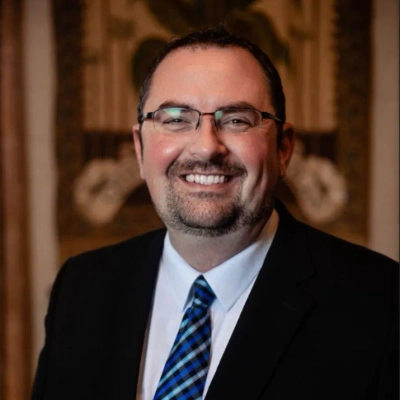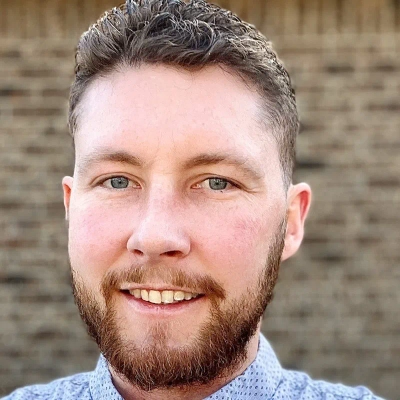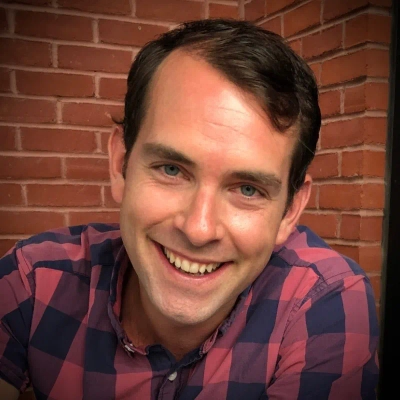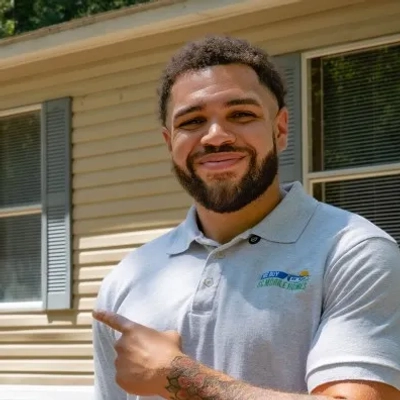How Media Coverage Directly Impacted Business and What We Learned
Media coverage can significantly impact business outcomes, but how exactly does it work? This article delves into the strategies and lessons learned from real-world experiences. Drawing insights from industry experts, it reveals how strategic media engagement can drive growth and build trust.
- Exclusive Data Drives Impactful Media Coverage
- Strategic Alignment Builds Trust Through Media
- Engineer Conversion Funnels Before Seeking Press
- Target Niche Publications for Relevant Exposure
- Balanced Fitness Approach Attracts New Members
- Unique Expertise Attracts Ideal Property Sellers
- Frame Stories Around Solving Community Problems
- Mission-Driven Narratives Boost Engagement and Sales
- Personal Story Amplifies Product on National TV
- Authentic Customer Stories Drive Valuable Coverage
- Hope-Filled Stories Transform Addiction Recovery Center
- Third-Party Validation Shortens Client Trust-Building
- Human-Centered Stories Boost Community Engagement
- Data-Driven Narratives Spark Client Interest
- Military Experience Creates Trust with Veteran Families
- Reach Target Audience Through Unexpected Channels
- Past Experience Builds Trust in Real Estate
- Family-First Approach Resonates with Homeowners
- Emotional Connection Drives Lawn Care Success
- Showcase Solutions to Peak-Season Pain Points
- Authenticity in Community Service Attracts Sellers
- Affordable Housing Solutions Spark Partnerships
- Honest Expertise Builds Community Trust
Exclusive Data Drives Impactful Media Coverage
We had this moment where things really turned around for a struggling energy startup I was working with. We looked at data from 500 customer sites and found out the tech was cutting peak energy use by 27%. So I took that insight and turned it into a clear story, then offered it as an exclusive to the Financial Times. We let their reporter check everything with two utility partners. That article ended up on the front page, brought in $14 million in new funding, and even got national regulators interested.
If you want real media impact, don't only share news, share proof. You've got to treat journalists like partners. Give them access, let them test what you're saying, and show how your story matters beyond your company. When you do that, the coverage doesn't only get clicks, and it changes what people think about you.

Strategic Alignment Builds Trust Through Media
One example that stands out is when I secured a feature in Forbes for my work. Instead of being just another PR "win," the coverage directly impacted my business because it validated my frameworks. Almost immediately, I saw a surge of inbound inquiries from B2B founders and executives who said they felt they could trust my methodology because it had been spotlighted in such a credible outlet. That single article not only drove new business but also strengthened long-term positioning for both Marquet Media and FemFounder.
The key takeaway for me was that not all media coverage is equal—it's not just about the quantity of placements, but also about strategic alignment. When the story highlights your IP and is published where your audience already looks for authority, it builds trust faster than any ad campaign ever could. That insight has shaped how I approach all future PR: focusing less on chasing mentions everywhere and more on securing the right coverage in the right places, tied directly to business goals.

Engineer Conversion Funnels Before Seeking Press
I'm Steve Morris, Founder and CEO of NEWMEDIA.COM. Here's a real story from my personal experience about why the critical factor in the effectiveness of press is what happens *after* you get the headline.
Media coverage that generated lasting revenue, because we measured it.
When we launched the new website for a client in the food service industry, the first thing we did was get featured on the front page of CNNMoney.com. Many people would consider that a home run just from the reach point of view. What made it a real home run was that every bit of coverage was connected to a digital intake funnel. Within a week of the CNNMoney feature, traffic to the site was up over 700%. Newsletter signups doubled. But the real thing to write home about was that the company got 15 qualified RFPs that week, which led to 9 ongoing relationships and 2 closed deals within a month.
What made that work, in retrospect, was that we'd built measurement and conversion funnels before we even reached out for press. There were calls to action front and center on every page mentioned in the story. We used "lead magnet" incentives people actually wanted. Our CRM flagged visitors tracked from CNNMoney.com. All of which means we knew the precise source of those 15 RFPs, instead of having to mumble something about "brand lift". Without these systems, the CNNMoney story would have seemed an unconnected spike in traffic and leads. That's money left on the table.
PR people or business owners who want to duplicate this success need to realize that coverage isn't a growth lever unless you engineer it to be. You have to assume that every story you get won't convert unless you already have calls to action and tracking in place. Press becomes a growth lever only when it's easy for new customers to take the next step, and for you to track them if they do.

Target Niche Publications for Relevant Exposure
One of the most impactful media wins I secured was coverage in a niche industry publication that my target clients read religiously. It wasn't the biggest outlet by reach, but it was the right one for the audience I wanted to engage. The article positioned our perspective on growth strategy at a time when the market was shifting, and within days, inbound inquiries started coming in from companies who referenced that piece directly. What made the difference wasn't just getting the coverage—it was ensuring the story connected to a timely issue people were already talking about. The key takeaway for me was that media success isn't measured by vanity metrics like impressions; it's about relevance and resonance. When your coverage speaks directly to the pain points of the audience you serve, it doesn't just raise awareness—it opens doors, builds trust, and accelerates opportunities that paid campaigns often struggle to replicate.
Balanced Fitness Approach Attracts New Members
When Studio Three was featured in a Chicago lifestyle magazine, the story focused on how we bring strength, cardio, and recovery together in one space. It came at a moment when people were tired of juggling memberships and piecing together workouts. The coverage didn't just draw new people to our doors; it showed our community that a more balanced way of training was possible.
One of those new members told me she had always felt nervous walking into gyms. After reading the article, she said our approach felt different, like something she could actually belong to. She started with cycling, then added strength training, and eventually recovery classes. Over time, she not only gained endurance but also a sense of confidence she hadn't felt in years. Her story is just one of many, but it's the kind that reminds us why we built Studio Three in the first place.
That media moment gave us the chance to share how carefully designed programming can solve real challenges: finding time for everything, avoiding burnout, and building consistency. It also helped us show that fitness is about more than reps or miles; it's about creating an environment where people feel supported at every step. The biggest lesson I took away was that media coverage has the most impact when it highlights people, not just programs. Sharing how our community members transform their lives is what connects with others and inspires them to take that first step. At its heart, Studio Three is about belonging and growth, and that feature helped bring that message to life.

Unique Expertise Attracts Ideal Property Sellers
When I was featured on a Las Vegas real estate podcast discussing how I transformed a severely distressed property in a historic neighborhood, our website traffic tripled, and we received 12 direct seller inquiries within 48 hours. The key takeaway was that highlighting the engineering mindset I bring to renovations—specifically how I created a systematic approach to preserving character while modernizing outdated systems—attracted sellers who were specifically looking for someone who would respect their home's history rather than just flip it quickly. This taught me that showcasing your unique professional background and how it shapes your approach creates a distinctive market position that attracts precisely the right clients.

Frame Stories Around Solving Community Problems
When a regional health publication featured our rapid response during a flu vaccine shortage, the coverage immediately increased inbound calls from clinics and pharmacies seeking supply solutions. The article highlighted both our logistical capacity and our ability to communicate transparently under pressure, which positioned us as a reliable partner in a competitive market. The most important takeaway was that media interest grows when the story is framed around solving a broader community problem rather than promoting company achievements. By focusing on the public impact, the coverage resonated with both healthcare professionals and patients, creating trust that carried well beyond the initial shortage.

Mission-Driven Narratives Boost Engagement and Sales
We once received regional newspaper coverage highlighting our commitment to supplying local schools with art materials through a donation initiative. The story quickly spread, and within days, teachers began reaching out directly, while retail traffic increased by nearly 15 percent that month. The coverage also attracted a partnership offer from a community nonprofit, which extended the program's reach. The key takeaway was that authentic, mission-driven stories resonate more than product features. When coverage focuses on values and community impact, it builds trust and engagement in ways traditional advertising rarely achieves.

Personal Story Amplifies Product on National TV
In January 2022, after much persuasion, I agreed to give my first live television interview on bTV, Bulgaria's top-rated national broadcaster. The program was "120 Minutes with Svetoslav Ivanov," the most-watched weekend show in the country. Because I live with a physical disability that also affects my speech, the production team sent me the questions in advance. I provided written answers, which I then recorded using a synthesized voice. During the live broadcast, I was in the studio while the host asked his questions, and my pre-recorded responses were played from the control room. I simply smiled and interacted visually with the audience. Nothing like this had ever been done before in Bulgarian media, and it earned me the nickname "the Bulgarian Stephen Hawking."
The interview was partly about my personal journey and education, but also about my then-recently launched biotech startup, Flower in a Test Tube. Our product is a living plant that blooms in vitro inside a test tube and survives for up to six months without care or watering—an eco-friendly alternative to traditional cut-flower bouquets. At the end of the interview, I gifted the host one of our flowers in a plywood stand shaped like a fairy, holding the test tube upright.
The impact was immediate and measurable. For nearly a month after the broadcast, we received hundreds of orders specifically for the "fairy stand" version, despite offering at least ten other stand designs on our website at various price points. People consistently chose the one they had seen on television.
The key takeaway was twofold. First, consumer behavior is often driven by what is most visible—people tend to buy what they have seen, not necessarily what is objectively the best option. Second, I realized the immense value of media presence and public visibility for brand recognition and sales. By associating the product with me personally, the audience connected not only with the innovation but also with the story behind it. It reinforced a lesson shared by leaders like Steve Jobs, Elon Musk, and Richard Branson: being the face of your product is a powerful driver of trust, awareness, and growth.

Authentic Customer Stories Drive Valuable Coverage
For a small business, getting media coverage can feel like an unattainable dream. We don't have a big PR budget, and sending a generic press release is often a waste of time. Our goal wasn't just to get our name in a publication; it was to build a reputation as a trusted, reliable partner.
The media coverage we secured that directly impacted our business came from a highly respected, niche trade blog in our industry. The story wasn't about us; it was about our expertise and our commitment to our customers. The key takeaway was that our best marketing isn't a sales pitch. It's an authentic story that a customer tells about us.
The story originated from our operations team. We had a customer who had a particularly challenging problem with a part. Our team went above and beyond to help them solve it, and the customer was so grateful that they posted about it online. From a marketing standpoint, we saw the post and reached out to the customer. We asked them if we could write a case study about their business and their project. The case study was a story about their success, and we were just the supporting partner. We then pitched that story to a trade blog that we knew our customers read.
The coverage was a massive success. The blog post drove a ton of traffic to our website, and it led to a huge number of new, high-quality leads. The key takeaway was that our best marketing isn't a sales pitch. It's an authentic story that a customer tells about us. My advice is simple: the best way to get media coverage is to make your customer the hero of the story. The best way to build a great brand is to be a company that is worthy of a great story.

Hope-Filled Stories Transform Addiction Recovery Center
I knew that if we were going to get media coverage, it had to be a story of hope, not just another sad story about addiction. So we worked with a local news station to do a segment on a client who went through our program and is now thriving. The story wasn't about our center; it was about this person's courage and resilience.
The reporter followed his journey, from his initial struggle to where he is now, thriving in his recovery. The segment was raw and honest, and it showed the real human experience of addiction and recovery. The most important thing was that it was a story of hope, which is what so many people are looking for.
The calls we received after that segment aired were different. The people on the other end of the phone said they saw the story, and it gave them the courage to reach out. The media coverage was a direct line from a human story to a human need, and it completely changed our business.
The key takeaway for me was that a person's story is the most powerful tool you have. My business isn't about getting media coverage; it's about being a platform for a person's story of hope. The most effective advertising is the one that's brave enough to be real.
Third-Party Validation Shortens Client Trust-Building
Securing a feature in a regional business journal had an immediate impact on lead flow. The article highlighted how our localized SEO campaigns helped a family-owned retailer double foot traffic within six months. Unlike paid placements, this story carried credibility because it came from an independent publication. Within the first week, several new prospects cited the article during consultations, and one enterprise account converted shortly after reading it.
The takeaway was that earned media has a multiplier effect beyond brand awareness. It validates your expertise through a third party, which shortens the trust-building process with potential clients. Paid ads can generate clicks, but they rarely carry the same weight in decision-making. That experience reinforced the importance of maintaining strong media relationships and having case studies ready, since the journalist built the piece around hard numbers and client quotes we were able to provide quickly.

Human-Centered Stories Boost Community Engagement
During a city-wide service initiative, a local newspaper covered our volunteers distributing meals and assisting with home repairs. The article highlighted personal stories from community members rather than simply noting the church's involvement. Attendance the following Sunday rose noticeably, but more importantly, several civic organizations reached out afterward to propose partnerships for future projects.
The key takeaway was that media coverage is most powerful when it tells human-centered stories rather than institutional narratives. People connected more with the faces and voices in the article than with our name alone.
That experience shifted our approach, leading us to frame future outreach not as announcements of programs but as opportunities for the community to see how lives are being changed through them.

Data-Driven Narratives Spark Client Interest
I secured media coverage for our company last year by pitching a story about how our digital signage platform helped a local retailer increase foot traffic during the holiday season. I focused on the numbers - a 25% increase in in-store visits and real-time engagement analytics - which made the story interesting for the journalist and their readers. The coverage ran in a popular industry publication, and within hours, we saw a surge in demo requests and inquiries from potential clients who had previously been on the fence about our platform.
The takeaway for me was the power of data-driven storytelling: journalists and audiences respond to concrete results, not just product features. Framing our impact in terms of outcomes made the coverage more credible and directly beneficial to our business. It reminded me to always prepare clear, outcome-focused narratives when pursuing media coverage.

Military Experience Creates Trust with Veteran Families
When Clarksville Now featured how we helped a veteran's widow navigate a complicated probate sale after her husband passed away during deployment, we received 17 calls from military families facing similar estate challenges within 48 hours. The key takeaway? Sharing stories where military experience informs our approach--like understanding the emotional weight of PCS moves or VA paperwork--creates immediate trust with fellow service members. They recognize we speak their language and respect their sacrifices.

Reach Target Audience Through Unexpected Channels
Our boutique travel company received a write-up in a culture magazine that had focused on subjects other than tourism in recent years. The article generated 40% of their monthly bookings because it attracted their desired customer base: people who value lifestyle experiences over status symbols and reject typical resort accommodations.
The most important lesson here is that your most valuable press opportunities exist outside of your competitors' usual spaces. These opportunities match the environments where your target audience naturally spends time. Your target audience will convert naturally when you use their preferred terminology in trusted environments.
Past Experience Builds Trust in Real Estate
A local community blog wrote a piece about my background as a teacher, focusing on how I now use those skills to guide people through stressful home sales, like probate or divorce. Almost immediately, I started getting calls from homeowners who said things like, "I need a teacher's patience for this process," not just a quick offer. My key takeaway was that sharing your "why" and the unique skills you bring from past experiences resonates deeply and builds a level of trust before you even pick up the phone.

Family-First Approach Resonates with Homeowners
One of the most impactful moments was when a local TV station highlighted my sons and me while we were helping a family downsize after a financial hardship. Almost immediately, the calls started pouring in from homeowners who said they felt like they already knew us--and trusted us--because they saw that family-first dynamic in action. The key takeaway for me was that media coverage works best when it shows who you are as a person, not just what you do as a business.

Emotional Connection Drives Lawn Care Success
A few summers back, GreenAce Lawncare was featured in a Boston lifestyle magazine that highlighted local businesses helping homeowners improve curb appeal. The story centered on one of our clients, a young family who had struggled with patchy, thinning grass for years. We had guided them through a 12-week fertilization and mowing plan, and by the end of the season, their lawn became the gathering spot for neighborhood cookouts. Seeing their children run barefoot across soft, green grass became the emotional centerpiece of the article.
The coverage reached people who weren't just looking for lawn care; they were looking for pride in their homes. Calls started pouring in from homeowners who wanted their yard to become a welcoming extension of family life. Many mentioned that they saw the article and felt encouraged that their lawn could also be transformed affordably without chemicals that harm the soil. That personal connection to the story translated into more consultations than any advertisement we had run.
One of the key lessons was that people respond less to technical details about nitrogen levels or mowing height and more to the picture of what their daily life could look like with a healthy lawn. A lush yard isn't only about aesthetics; it's about enjoying a Saturday morning coffee on the porch or letting kids play outside without worry. By framing our services in the context of everyday living, the message resonated far more deeply.
Showcase Solutions to Peak-Season Pain Points
After The Augusta Chronicle featured one of my high-end short-term rentals during Masters week - where we included complimentary golf club cleaning and personalized course guides - we not only doubled our booking revenue but received five partnership requests from other investors the following month. The key lesson? Strategic media placement that showcases how your offering solves peak-season pain points doesn't just attract clients; it attracts collaborators asking, "How can we do this together?"

Authenticity in Community Service Attracts Sellers
We were featured in a local news segment about my background as a football coach and how my brother and I are now revitalizing homes in the community. The story focused on giving back, which led to several sellers calling us directly, saying they trusted our intentions for their old family homes. My key takeaway was that authenticity is your best marketing; when people see your genuine passion for the community, whether on the field or in real estate, they want to be part of that positive story.
Affordable Housing Solutions Spark Partnerships
A local paper published a story on how we transformed a neglected manufactured home into a beautiful, affordable space for a first-time homebuyer. Following the article, we didn't just receive calls from sellers; we also got calls from mobile home park owners who wanted us to help them revitalize their entire communities. The takeaway for me was that by showcasing our work as a direct solution to the affordable housing crisis, the media coverage positioned us not just as buyers, but as community-building partners.

Honest Expertise Builds Community Trust
I don't think about "securing media coverage." My business is a trade, and the one time that had a direct impact on my business was a simple, old-fashioned one: a local news reporter called me after a hailstorm, and I gave them an honest, straightforward opinion.
My process is simple. I was on a job after a bad hailstorm, and a local news reporter called me and asked for my opinion. I didn't use it as a chance to plug my business. I just gave them a real, honest opinion on the damage. I told them what to look for on a roof, and I told them what to look for in a contractor. I made it clear that I was a person who was a part of the community, not just a person who was trying to get a job.
The local news story was a huge success. The phone was ringing off the hook with calls from people who were already convinced that we were a local, honest business. They didn't call because of the price. They called because they saw that we were a local business that was committed to the community. The "media coverage" was simple and human, but it had a huge impact on my business.
My key takeaway is that the best "media coverage" you can have is a great reputation. The best way to get a new client is to be a person who is honest and transparent. The best way to build a great business is to be a person who is a good craftsman. When you do that, the media will find you.







